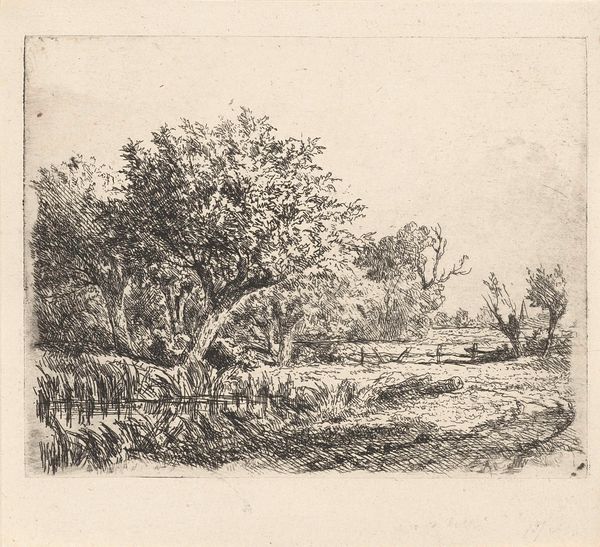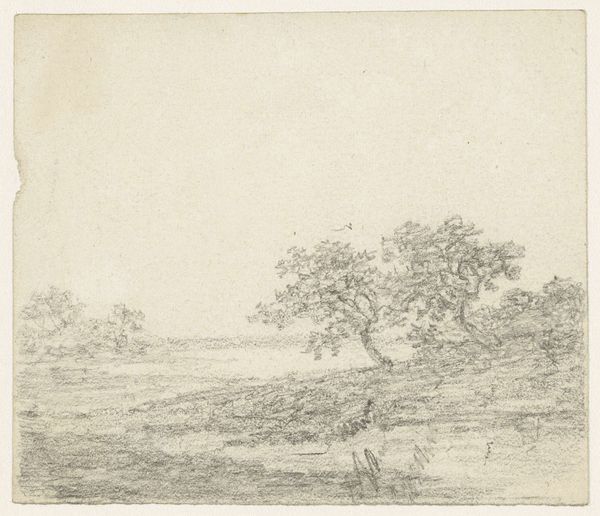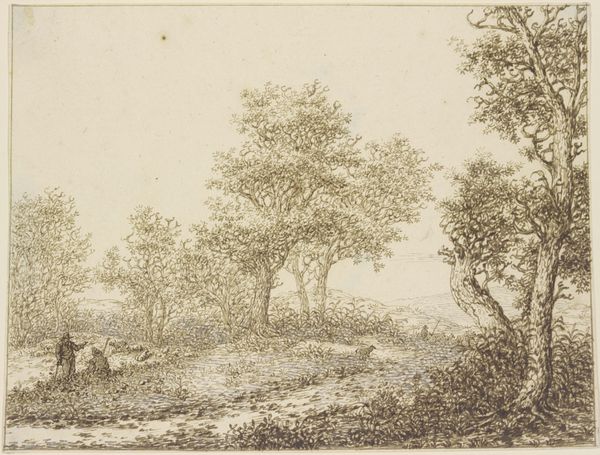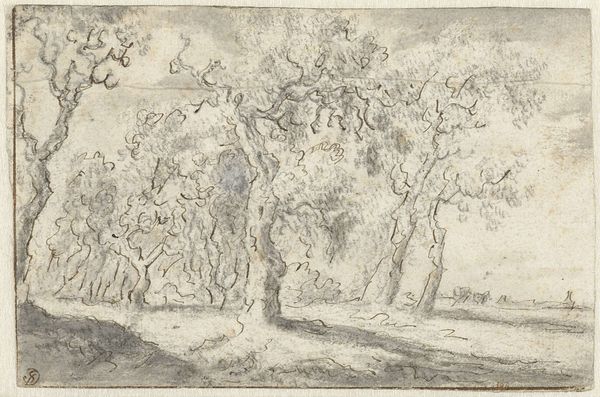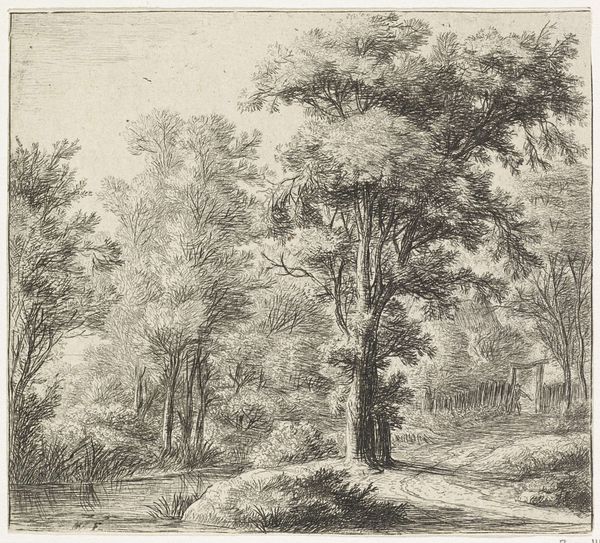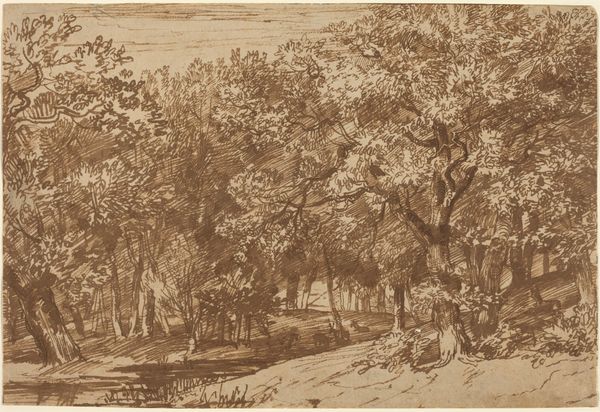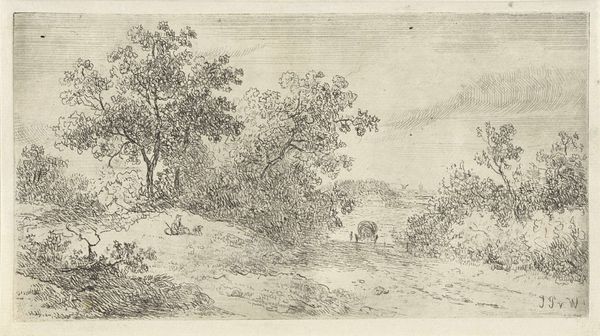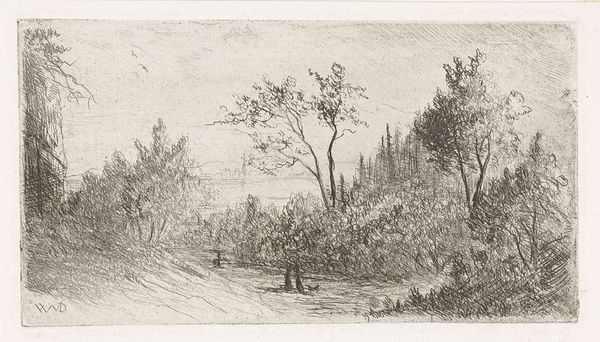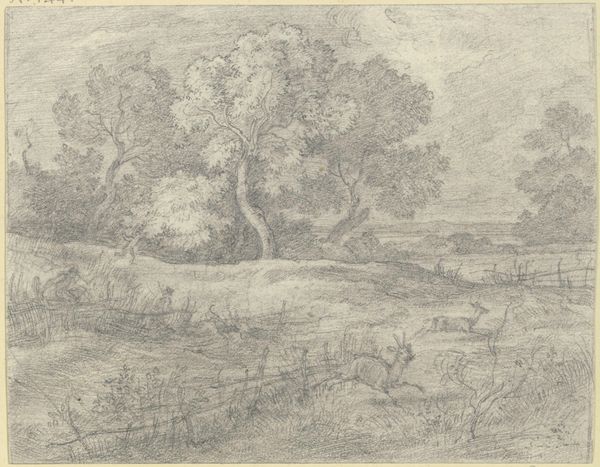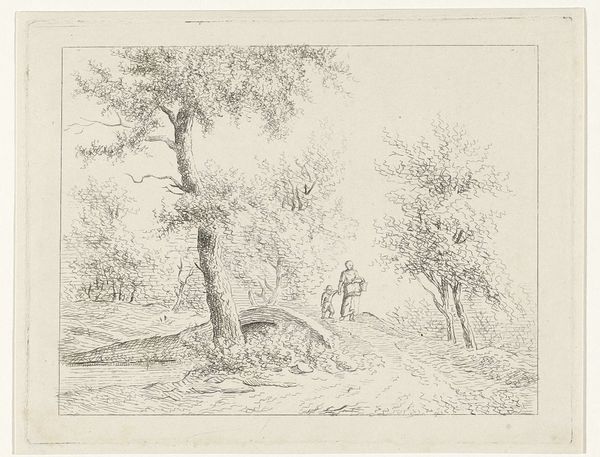
drawing, ink, pencil, chalk, graphite, pen
#
drawing
#
baroque
#
dutch-golden-age
#
pen sketch
#
pencil sketch
#
landscape
#
etching
#
ink
#
pencil
#
chalk
#
pen work
#
graphite
#
pen
Copyright: Public Domain
Curator: What strikes me immediately about this pencil sketch, “Small section of a tree with a fence,” attributed to Jacob van Ruisdael, is its tranquility. It’s such a simple scene, a small copse defined by its boundary—modest, almost melancholic. Editor: I agree, the understated nature really draws you in. Knowing this work arguably comes from the Dutch Golden Age—a period of significant social stratification, colonial expansion and the rise of merchant power—I can't help but see this image as a negotiation between an idealized natural world and the stark realities of land ownership, enclosures, and the privileges such possessions afforded during that era. How does this idyll mask these broader power structures? Curator: That's a valid perspective. Focusing on the formal elements, notice how the artist meticulously renders each tree using graphite and ink—each branch delicately reaching, conveying a remarkable level of detail. What could these trees and the fence symbolize? It appears that something has been defined, separated. I can’t ignore that. Editor: To my mind, the fence, and those trees huddled together behind it, serve as potent symbols of restriction and cultivation, both literally and figuratively. Ruisdael’s placement almost feels symbolic—implying deeper, unspoken tensions related to enclosure, access, and perhaps even ecological transformation. Curator: That's thought-provoking. Considering that many Golden Age landscape paintings reflect a growing sense of national pride, it becomes an interesting case of art aligning with dominant socio-political agendas. However, even through what you called the "restriction" presented by the fence, it can be taken as safety: something has been safeguarded. In modern eyes we see the downside of defining property, but the era considered it a net benefit for those that had such opportunity. Editor: Perhaps we shouldn't discount the fact that, even when considered through the lenses of feminist and critical race theories, there is an emotional value that surpasses that analysis; perhaps a desire to recapture, at least in representation, what was rapidly vanishing amidst growing commercial and agricultural expansion. It prompts reflection on whether all aesthetic appreciation, including mine, runs the risk of romanticizing landscapes marked by injustice and exploitation. Curator: Absolutely. Thinking about Van Ruisdael's possible intentions while making a seemingly objective record of a place through this image raises such vital and necessary points. It requires continuous dialogue about the ethical implications inherent within any visual representation, regardless of its apparent simplicity. Editor: Yes, that is right; perhaps by grappling with such nuanced considerations we are better equipped to appreciate its emotional and cultural complexities. Thank you for illuminating these subtleties in what seems like an uncomplicated landscape.
Comments
No comments
Be the first to comment and join the conversation on the ultimate creative platform.
